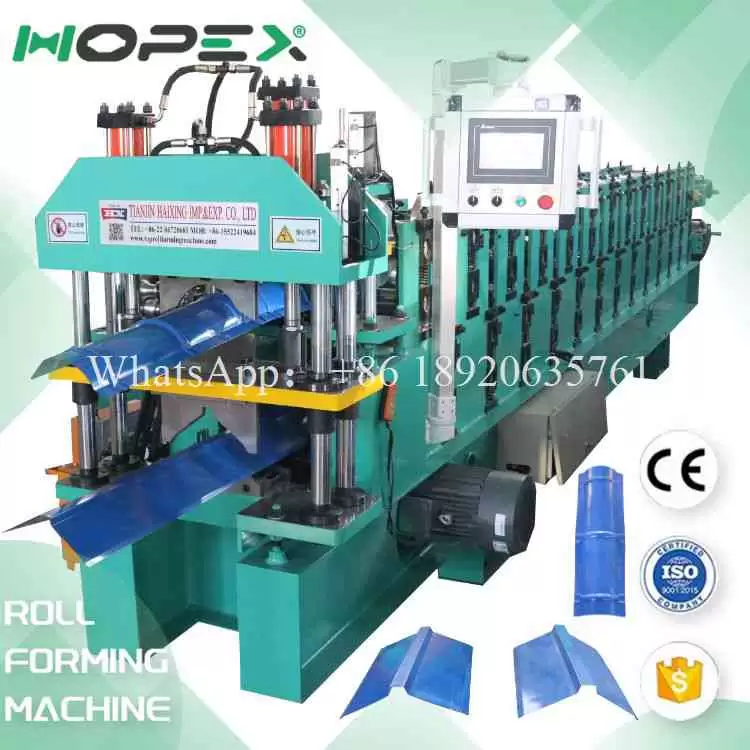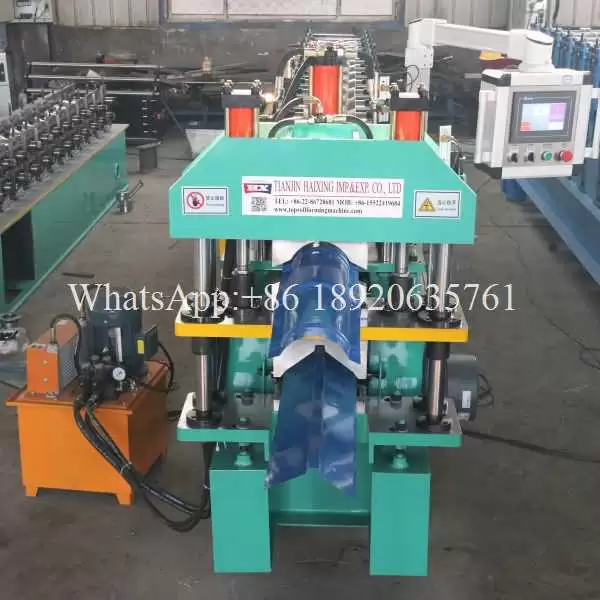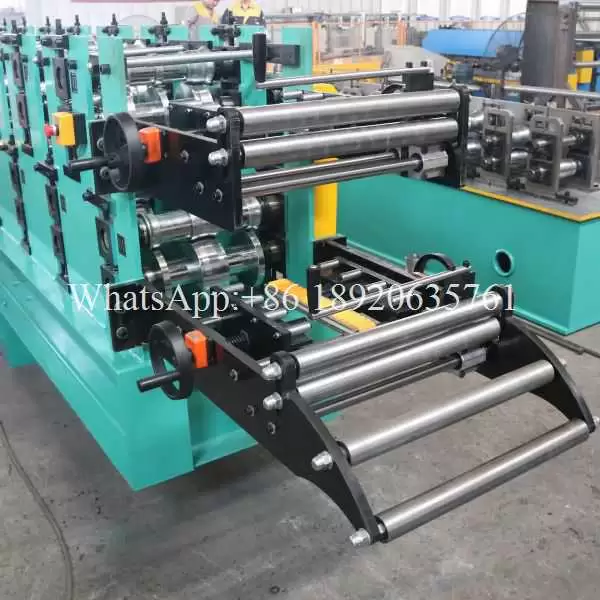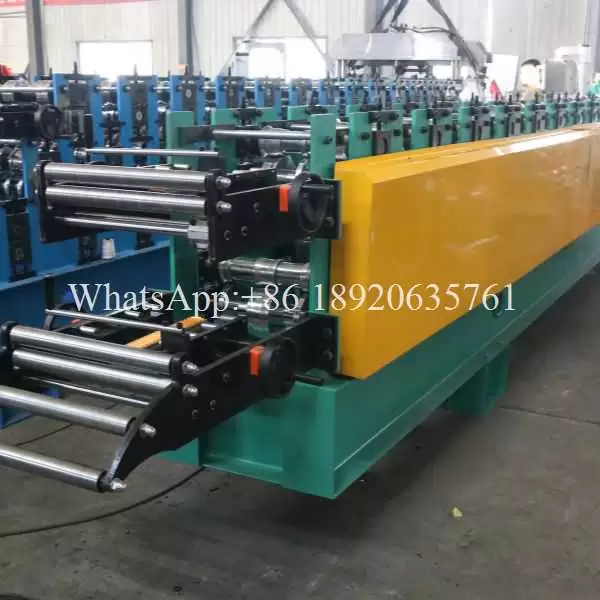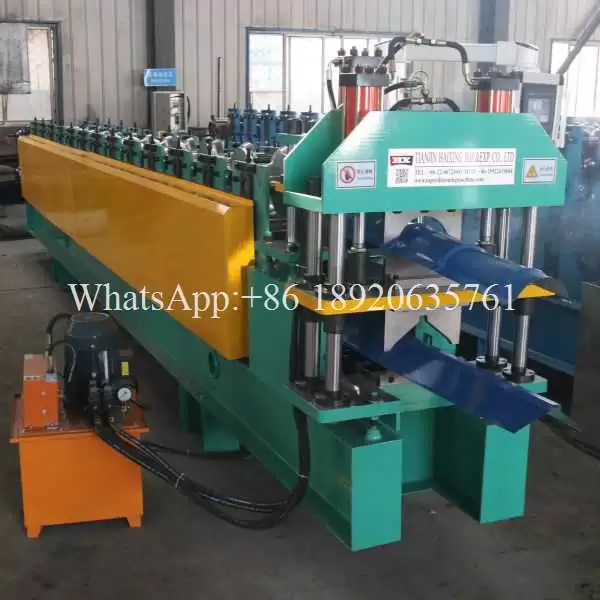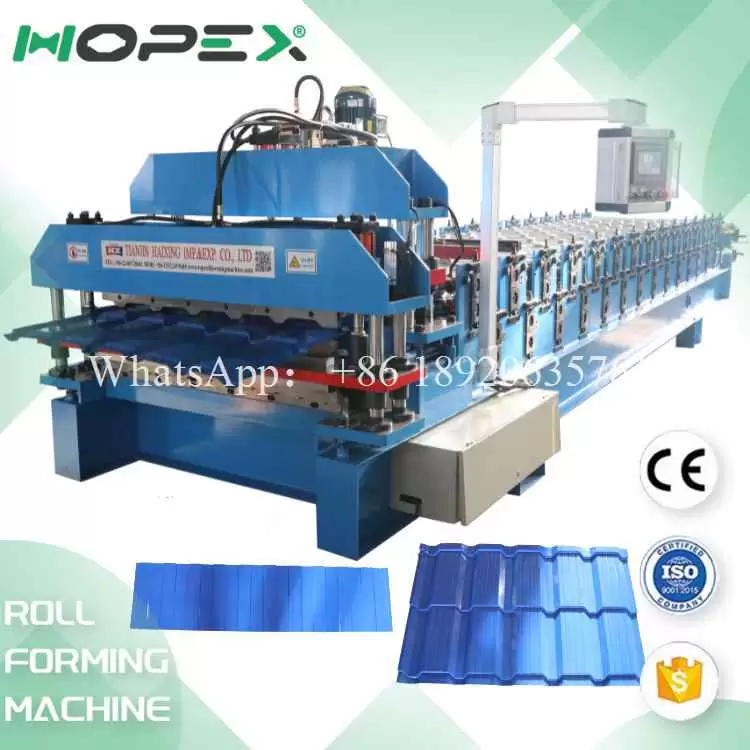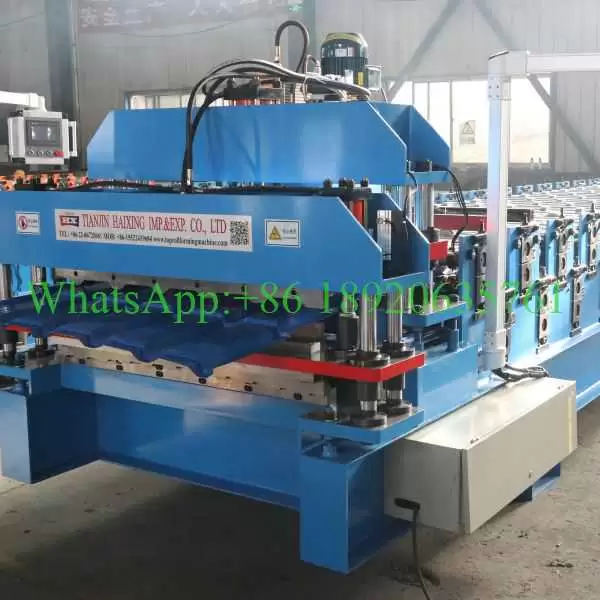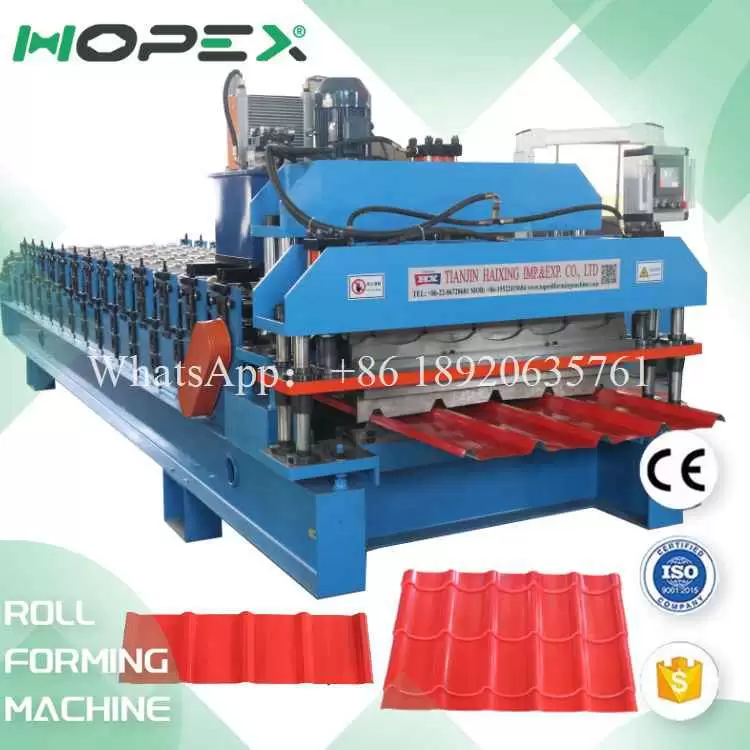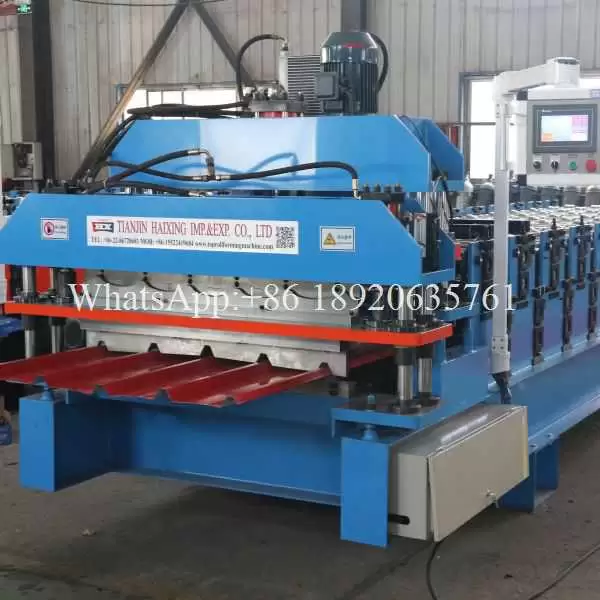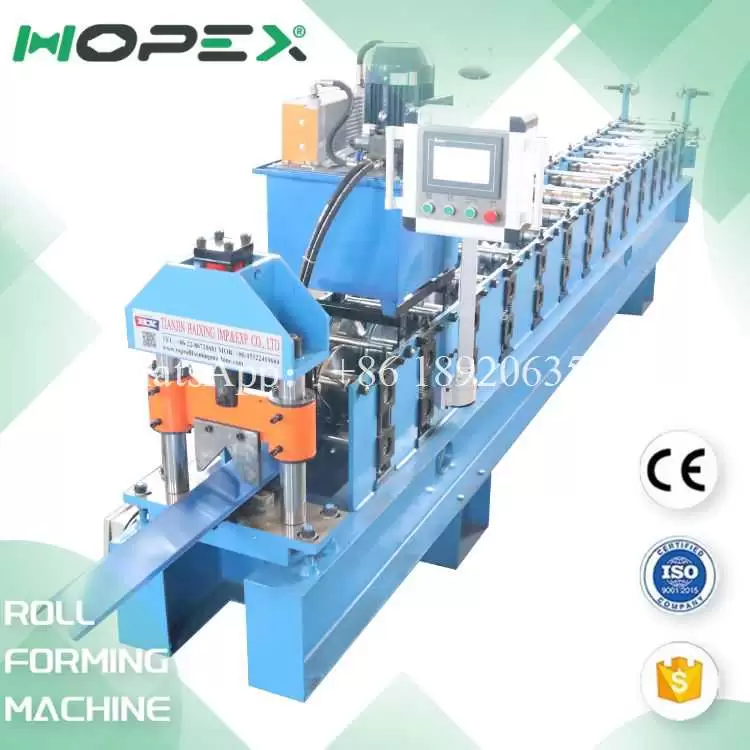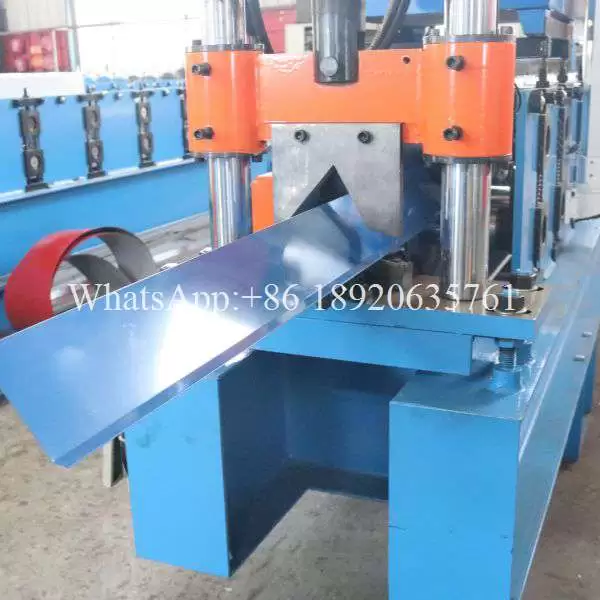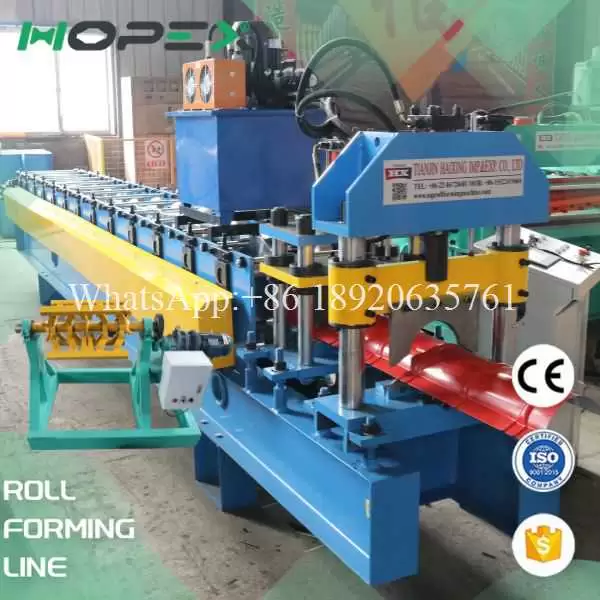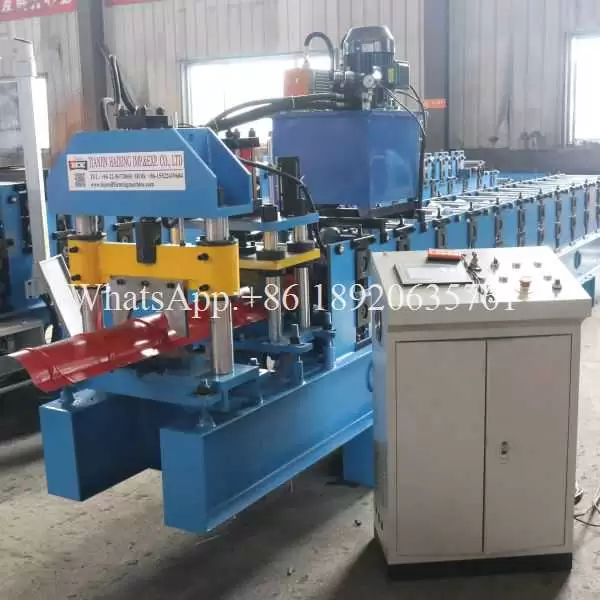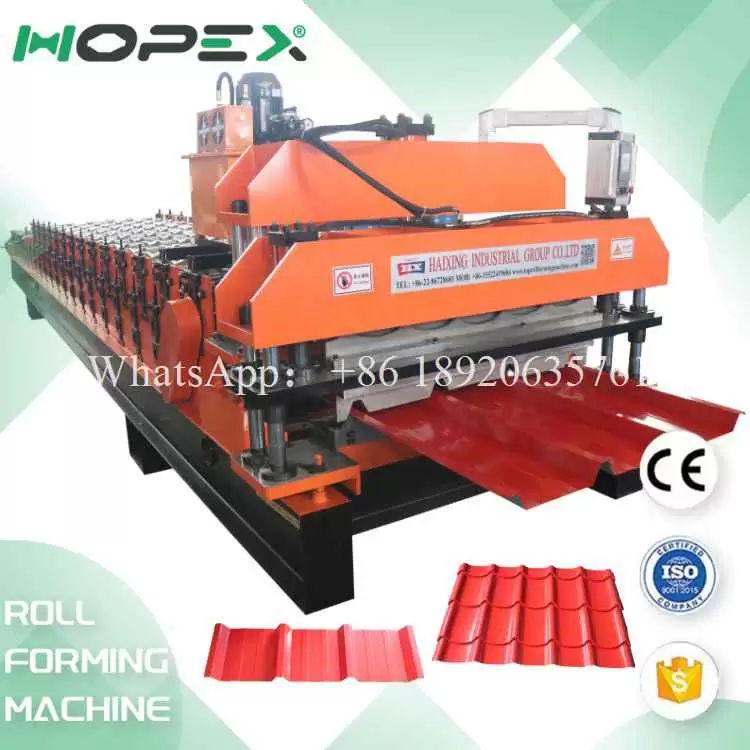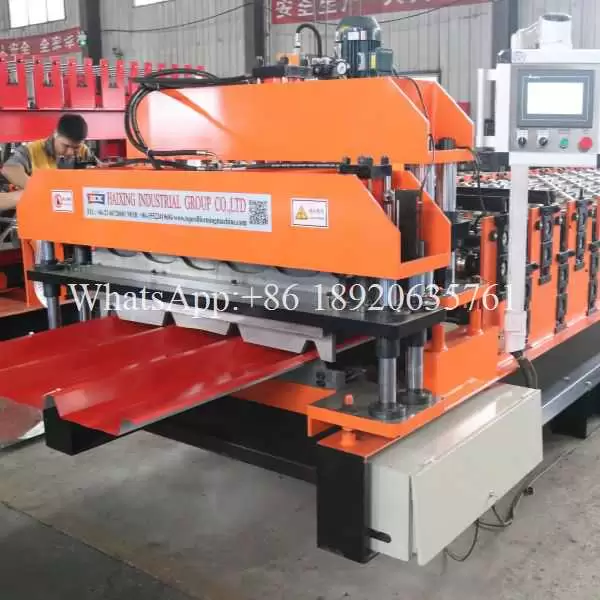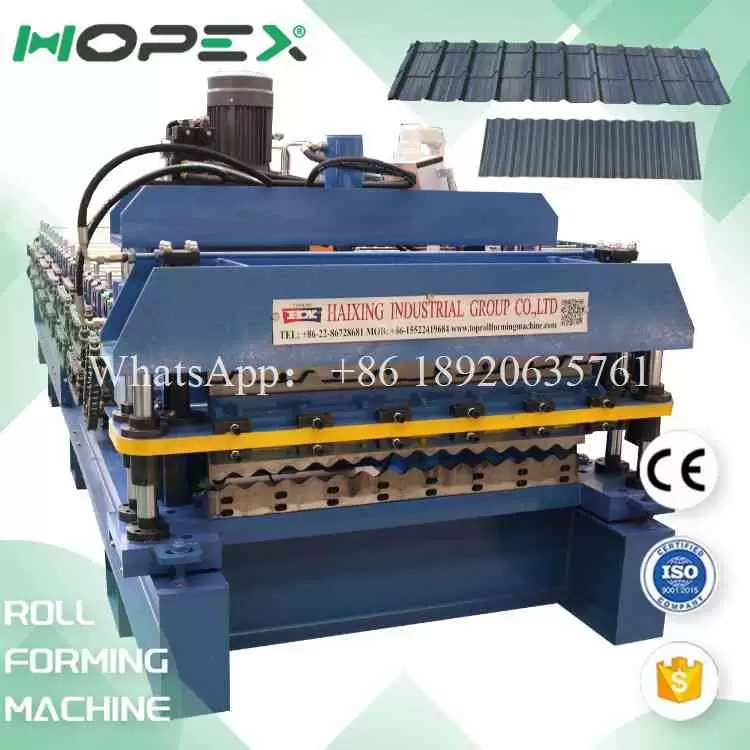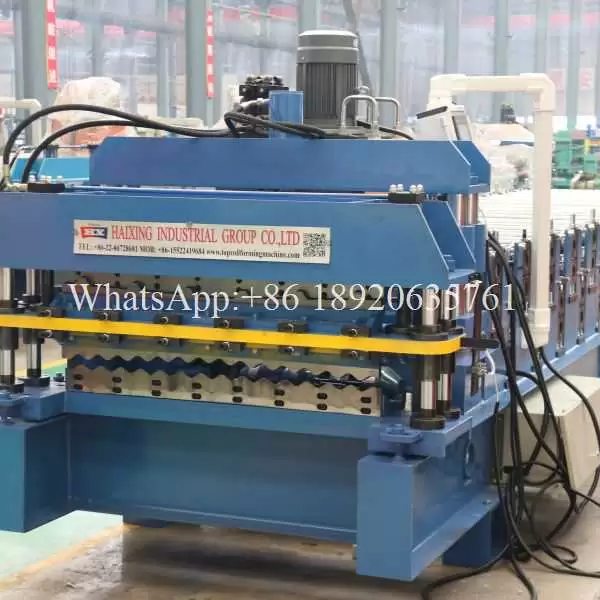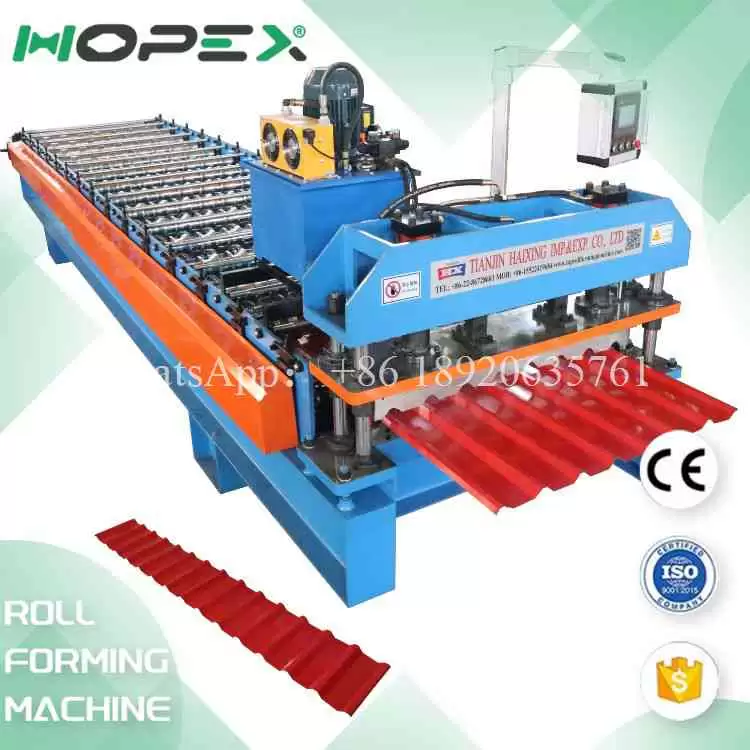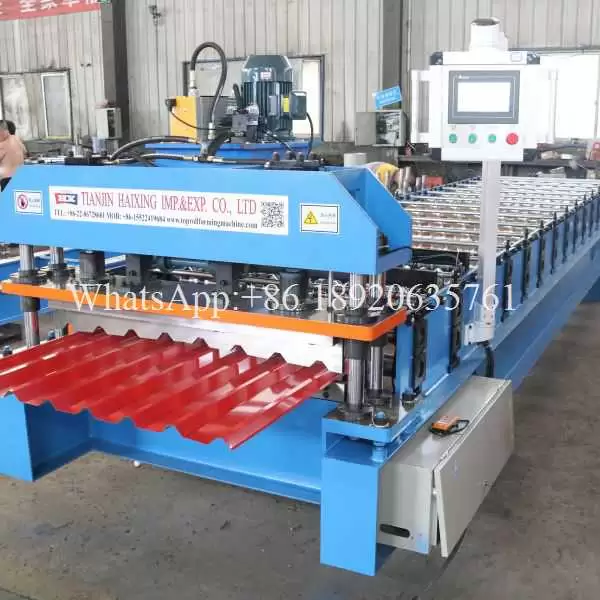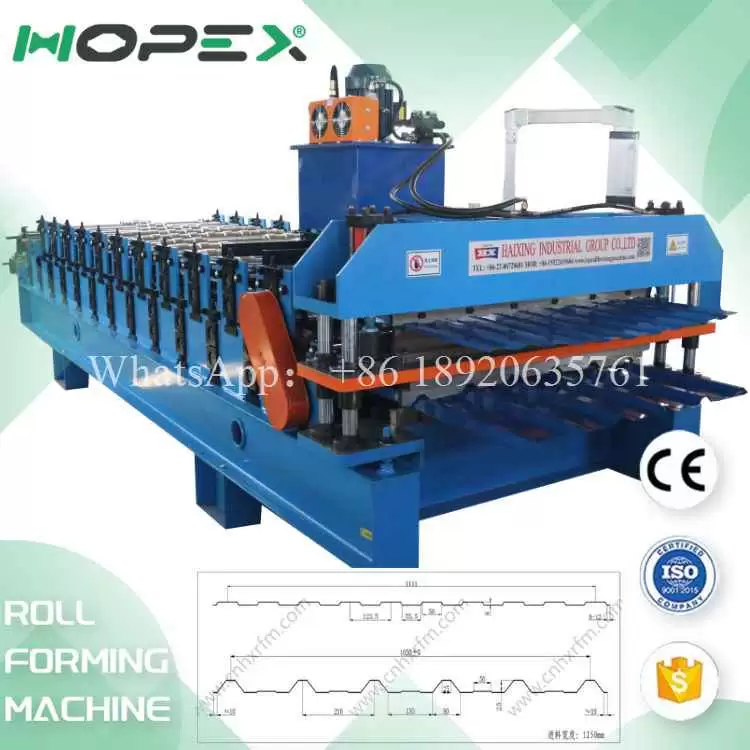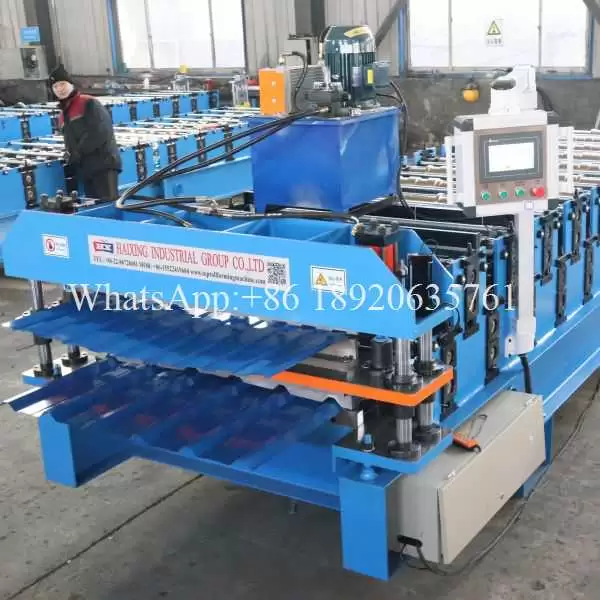Product
Automated double layer ridge cap machine line
The Double Layer Ridge Cap Machine Line: Precision & Flexibility in Roofing Production
In the demanding world of modern roofing construction, efficiency, durability, and precision are non-negotiable. Meeting the specific challenge of crafting robust, weather-tight ridge caps – the critical sealing element along roof peaks – requires specialized technology. Enter the double layer ridge cap machine line, a sophisticated integrated production system engineered to manufacture high-performance double-layer ridge caps with remarkable speed, consistency, and minimal waste. This comprehensive solution represents a significant leap forward in roofing component fabrication.
Roll Forming Process Workflow Diagram

More parameters
| Product Name | |
| Main motor power | 5.5 kw |
| Hydraulic station | 4 kw |
| Produce speed | 2-3 m/min |
| Shaft material | 45# Steel |
| Touch screen | PLC or customized according to customer requirements |
| Rolling materials | Cr12, heat treatment HRC58-62℃ |
| Cutting blade material | Cr12MoV, heat treatment HRC58-62℃ |
| Roller diameter | Φ70 mm |
| Voltage | 380v 50hz 3p be customized |
| Feeding thickness | 0.3-0.8mm |
| Rows | 13+13 |
| Feeding width | 312mm |
Core Components & Workflow:
Uncoiling (De-coiling): The process begins with two decoilers, typically positioned at the line's entry point. One holds the coil for the upper layer material (e.g., pre-painted steel, aluminum), the other holds the coil for the lower layer material (which could be the same, or often a different type like galvanized steel or a specialized underlayment). The double layer ridge cap machine line carefully feeds these two separate coils into the system.
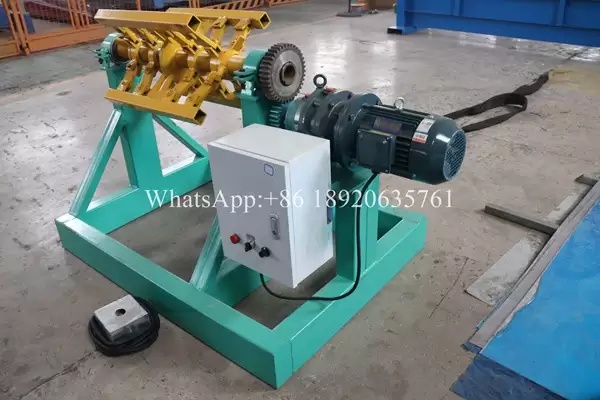
Leveling (Flattening): Material from each coil passes through individual precision levelers. These units eliminate coil set (the inherent curvature from being wound) and any minor crossbow or twists. Achieving perfectly flat material is crucial for ensuring consistent forming quality and preventing defects in the final ridge cap profile further down the double layer ridge cap machine line.
Roll Forming (The Heart of the Line): This is where the distinct characteristic of the double layer ridge cap machine line becomes most apparent. The line incorporates two separate roll forming stations:
Upper Forming Station: This station consists of a series of precision-engineered rolls mounted on shafts. As the upper layer material progresses, these rolls progressively bend it into the specific profile of the ridge cap's top/exposed layer. This profile determines the visible appearance and weather performance.
Lower Forming Station: Similarly, the lower layer material travels through its own dedicated set of forming rolls. This station shapes the material into the profile designed for the underside of the ridge cap, which often includes features for secure interlocking with the roof panels beneath and may have different functional requirements than the top layer.
Critical Independence: Crucially, the double layer ridge cap machine line operates these two forming stations independently and sequentially. Only one station (upper or lower) is active at any given time. Material is fed only to the active forming station.
Shearing/Cutting: After forming, the continuous profile from the active station (upper or lower) advances to a high-precision cutting unit. This is typically a flying shear or servo shear synchronized with the moving material. It cuts the formed profile to the exact, pre-programmed lengths required for ridge caps. The accuracy of this cut is paramount for proper fit and installation on the roof. The double layer ridge cap machine line ensures consistent cut length regardless of which layer is being produced.
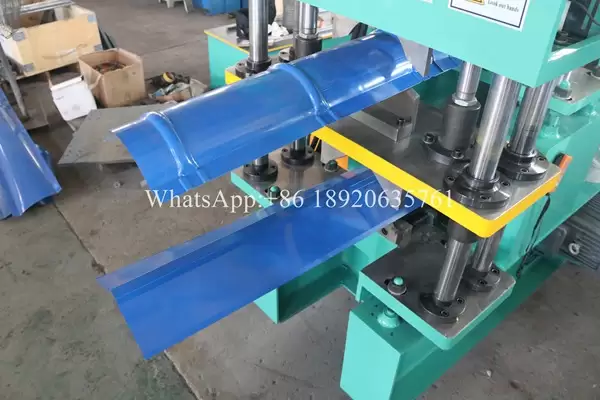
Stacking/Packaging: The cut pieces (either upper profiles or lower profiles) are then automatically conveyed to a stacking station. Stackers use belts, arms, or lifting platforms to neatly gather the finished pieces into stable, manageable bundles, ready for strapping, wrapping, and shipment. The double layer ridge cap machine line often includes counters to track production quantities per layer.
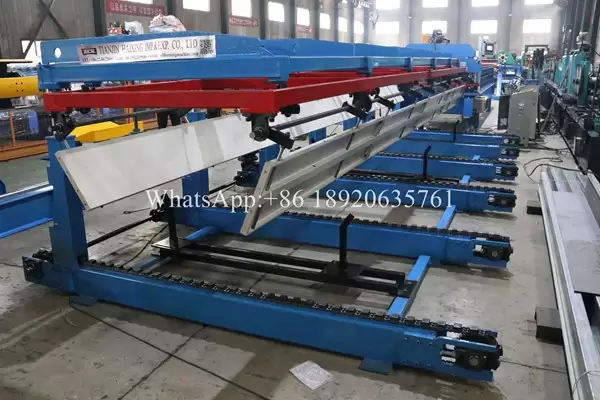
Our photos with our customers
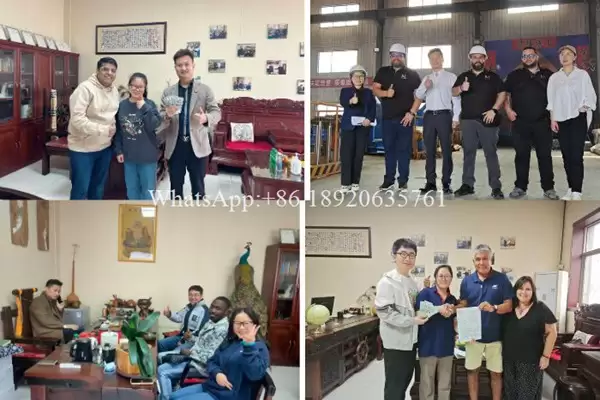
About us
HOPEX (Wuxi) Intelligent Technology Co., Ltd.: Pioneering Roll Forming Innovation Since 1996
Founded in 1996 with a dedicated R&D team for roll forming technology, HOPEX has evolved into a global force in intelligent manufacturing. Established in Wuxi in 2003, we launched our core product lines—semi-automatic purlin machines, cable tray machines, and guardrail machines—laying the foundation for our commitment to 100% customized solutions.In 2016, we doubled our team and expanded our offerings to include solar strut machines and heavy-duty leveling/slitting lines, while strengthening R&D for our flagship products. By 2022, HOPEX achieved 100% sales growth and revolutionized production through full automation, upgrading all equipment to smart manufacturing standards and growing our R&D team to 10+ experts.Today, we export cutting-edge machinery worldwide—serving Russia, Australia, India, the Middle East, Southeast Asia, and beyond—as we fully enter the global market in 2025. Our vision is clear: to be the global leader in roll forming technology, making precision engineering easier and hassle-free for industries everywhere.
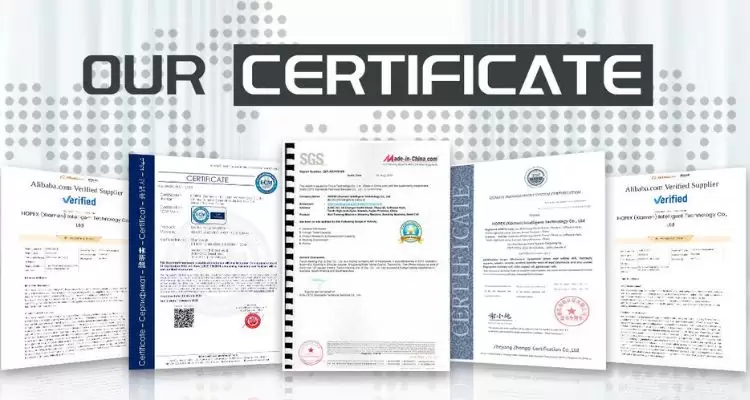
FAQ
Q: Are you a trading company or a factory?
A: We are a factory with a professional production team and service consciousness, just for exporting various types of cold roll forming machines.
Q: Can a machine produce only one style of panel profile?
A: Not complete. Suitable for a Automated double layer ridge cap machine line. It can produce more than 3 panels.
Q: How long does it take to manufacture the machine?
A: In general, the Automated double layer ridge cap machine line be completed in 20 to 45 business days. But if you need machines urgently, we can save you time.
Q: Is there quality control when producing the production line?
A: Yes, we have a team that is responsible for quality control, including the laying of raw materials, processing rolls and other parts, processing, assembly, testing, and packaging on the roll surface and shaft.
Q: What can you do if the machine breaks?
A: Our machine is warranted for 24 months. If the damaged part cannot be repaired, we can send a new part to replace the damaged part, but you will need to pay the courier fee yourself. If the warranty period is exceeded, we can resolve the issue through negotiation, and we provide technical support for the entire life cycle of the device.

